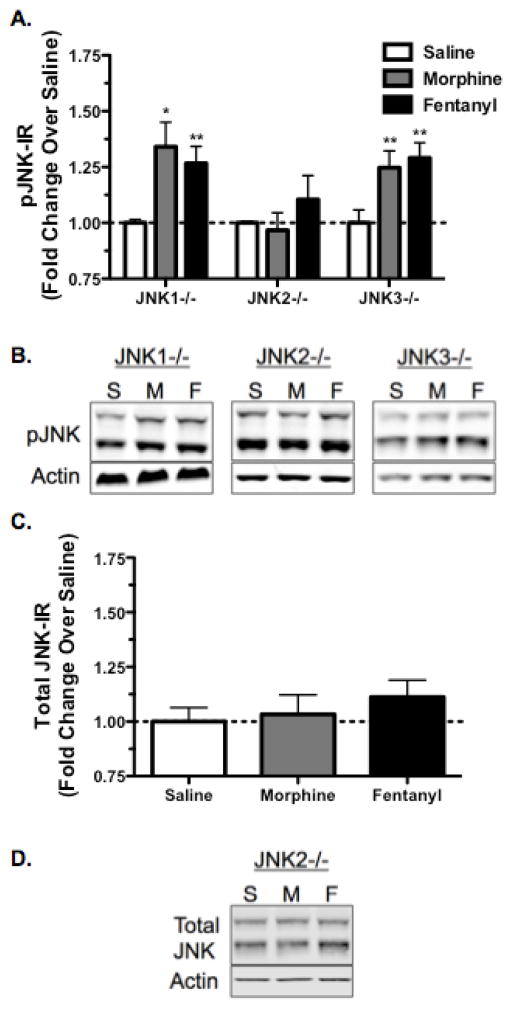FIGURE 2.
Morphine and Fentanyl Mediated Phospho-JNK Increase in the Spinal Cord is Selectively Abolished in JNK2−/− Mice, but not Significantly Affected by JNK1 or JNK3 Gene Knockout. A, Animals were treated with saline, morphine (10mg/kg, s.c.), or fentanyl (0.3mg/kg, s.c.) and their spinal cords were harvested 30 min post-treatment for phospho-JNK-IR analysis. Both MOR agonists increase phospho-JNK-IR in JNK1−/− and JNK3−/− mice but failed to increase phospho-JNK-IR over baseline in JNK2−/− mice. B, Representative images are shown for each phospho-JNK data set. C, Total-JNK-IR was also not altered by morphine or fentanyl in JNK2−/− mice, indicating that the effects on phospho-JNK were not a result of alterations in total protein levels. D, Representative images are shown for the total-JNK data set. n=3–10; Data analyzed by one-sample t-test; statistical outliers were determined by the Grubb’s Test with significance set to α=0.05.

